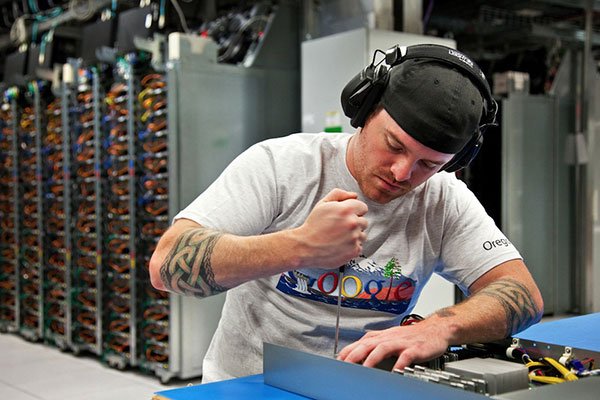A wide swath of Fortune 500 companies currently maintain or will develop a green energy and sustainability agenda as part of their corporate responsibility ethos. Google is among the organisations asserting an environmental consciousness, and it was the emphasis of Francois Sterin’s opening keynote at this week’s DCD Converged event in London.
As Google’s director of global infrastructure, he is responsible for overseeing the company’s data center facilities in the EMEA region, including their energy needs and location strategy. In a session on how the growing data center industry can cost-effectively take advantage of renewable energy choices, Sterin provided a timeline of Google’s experience in the area.
It's not about the money
He explained that as a data center provider, the company’s need to become more energy efficient has taken on increasing importance – and it’s something the entire data center industry should take seriously. “Being energy efficient is at the core of our mission as a company”, Sterin asserted. “But it’s also part of the agenda for many fortune 500 companies that may eventually become our customers. It matters to Google and many of our peers. We believe it will mater to data center customers.”
Renewable energy doesn’t necessarily command a premium price in all regions, and there are many ways organizations can purchase green energy options at the same price or comparable with traditional fossil-based fuels. In some cases renewables can be a least cost option, and serve as a better hedge against the price volatility of energy generated by fossil fuels.
For example, in the US wind power is becoming cheaper and affordable. The same goes for Europe, Sterin argued, which is experiencing a 10 to 15% percent decline in cost. “This is due to turbine suppliers pushing their prices down, and also the turbines themselves getting larger,” Sterin said in his analysis.
Data centers consume approximately three percent of the world’s energy, he said, citing an evaluation by Forrester Research. The uncertainty of carbon regulations around the globe makes getting a jump on a more robust renewable energy portfolio necessary to help lessen the financial impact if and when they are enacted.
Sterin outlined a two-step process by which Google has reduced its carbon footprint. These initiatives include reducing energy use through efficiency efforts, followed by negotiating agreements so the company can strike renewable energy arrangements to offset the balance of their fossil fuel energy purchases. The company purchases these offsets via PPAs (power purchase agreements) with clean energy providers near the actual data center location.
On Tuesday Google announced its latest investment in renewable energy to power its newest data center in Eemshaven, the Netherlands, scheduled to open in 2016. The tech colossus inked a 10-year deal with Dutch energy provider Eneco to buy the entire output of a Netherlands wind farm to power the €600m ($773m) data center it is building.
All three of Google’s currently operational European data centers are “chillerless,” Sterin noted, each using a different method to achieve cooling without the need for energy-intensive processes.
He also advised that companies develop a target for their renewable energy objectives. Google currently uses renewables for 35 percent of its data center energy needs. “Our stated goal is to be powered by 100 percent renewable energy”, he said, reiterating Google’s previously publicized goal.
Organizations should use metrics to track their carbon footprint, Sterin added. Measuring total metric tons of carbon dioxide produced year over year, or gross carbon emissions per million dollars of revenue, were just two examples that Google uses to track its progress toward becoming carbon-neutral.
Sterin lamented that the data center industry does face significant challenges to achieve increased sustainability. Depending on location, operators will encounter regulatory complexity. Some utility providers will be unwilling to negotiate. Expiring and uncertain subsidies can give rise to potential price fluctuations.
“Make sure what you agree to pay is feasible for your business”, Sterin declared. “But we are growing as an industry right now, so we should collectively leverage our position to achieve more green data centers.”

